This is the default narration at loading ...
Contents here

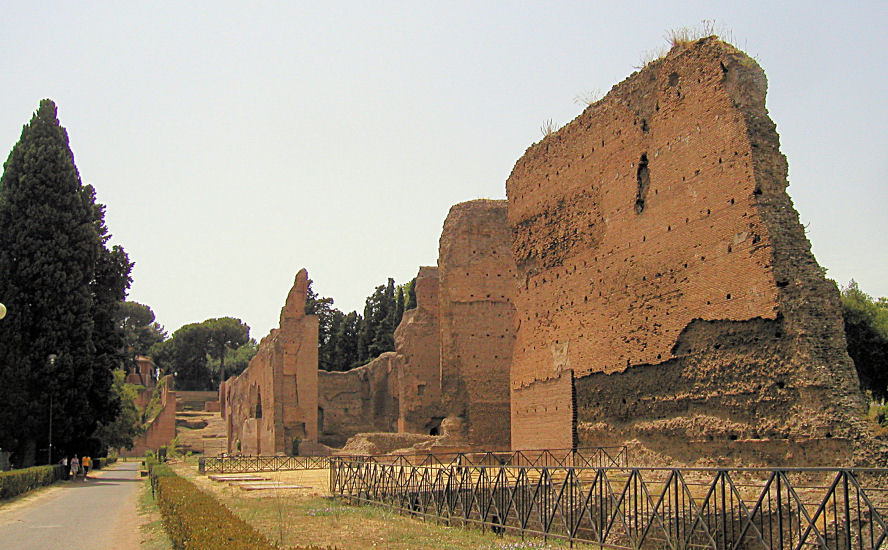

Baths of Caracalla
This particular bath complex was constructed around 212-216 AD by the Roman Emperor Caracalla and he actually inaugurated the baths himself. The total construction was however not completed until around 235 AD.
It covered an area of 36 acres, the buildings measured 230x115 meters and stood some 38 meters tall.
Its total capacity was almost 1600 bathers.
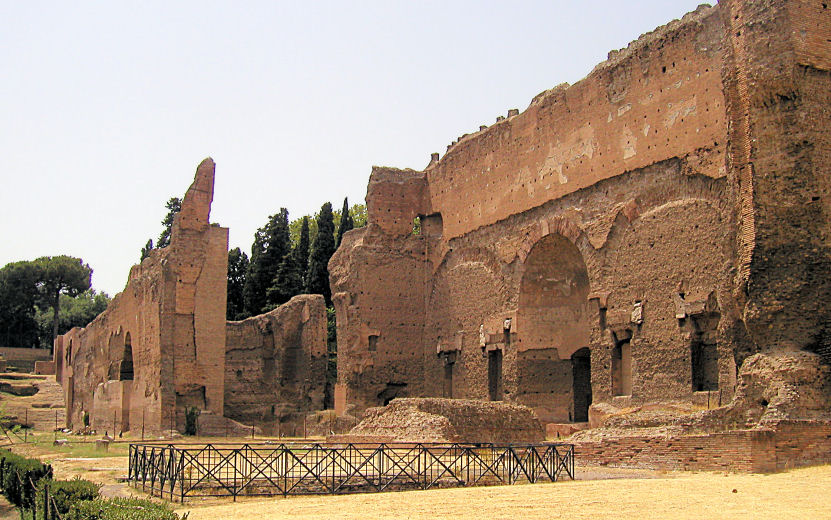

Baths of Caracalla
Even though bathing was a still a key reason for visiting the baths, they served as much as a place of leisure activities, workouts, informal meetings and libraries.
Like most public libraries at the time, there would be two separate libraries -one with texts in Latin and one with texts in Greek.
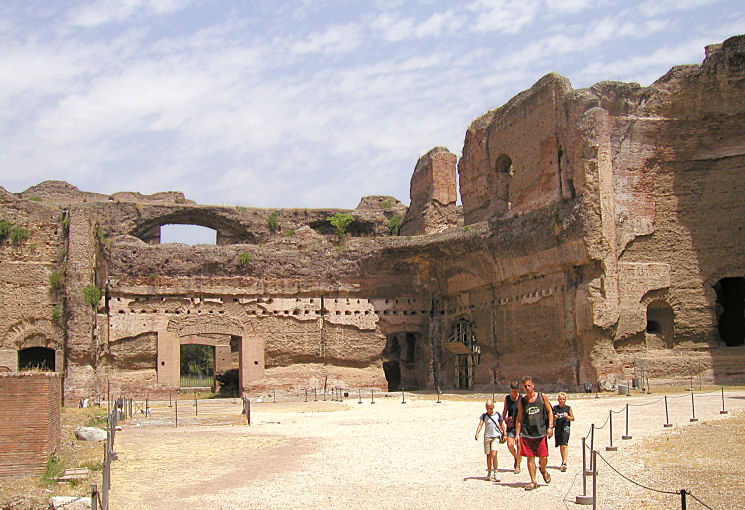

Baths of Caracalla
The baths offered the three standard bath types: The cold baths (frigadarium), the warm-water pools (tepidarium) and the hot baths (calidarium).
The central part of the calidarium had a "sweating room" (sudatorium) -not unlike today's sauna.
Other rooms were used for gymnasiums, boxing, libraries, stores, dressing rooms, showers etc.
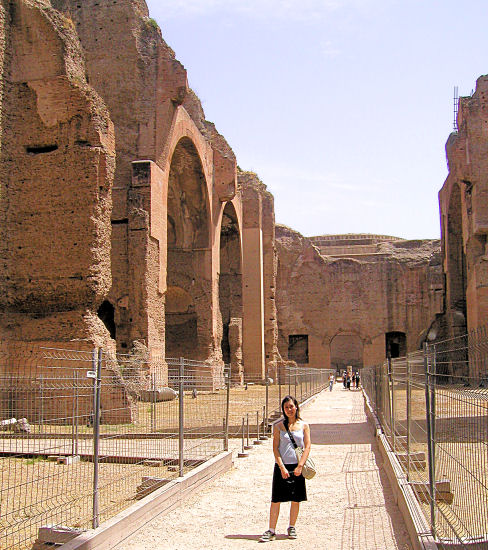

Baths of Caracalla
The large amount of water needed to run the baths was all supplied via the Aqua Marci aqueduct, originally constructed 144-140 BC by praetor Marcius (hence the name) and paid for by the spoils of the victories at Corinth and of the destruction of Carthage during the Third Punic War.
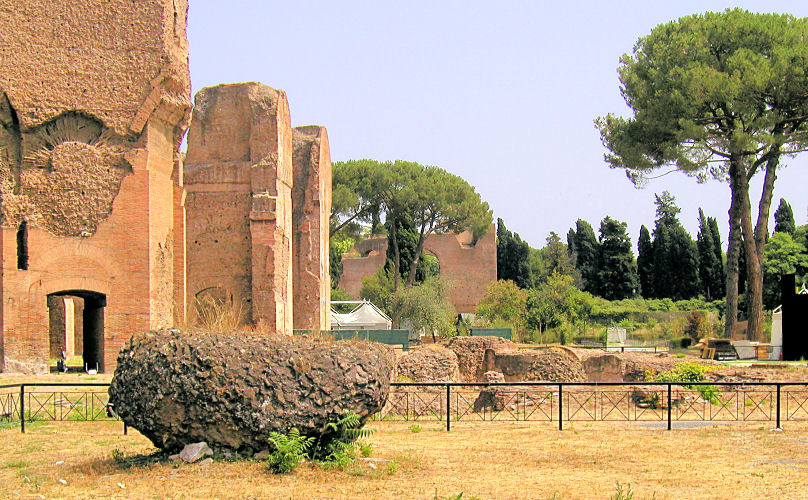

Baths of Caracalla
The areas around the main structures were laid out with gardens, groves, halls for taking a stroll, libraries, academies, quiet corners for philosophers, shops, etc.
A trip to the "baths" was more of a social, physical and academic event rather than merely for the purpose of taking a bath.
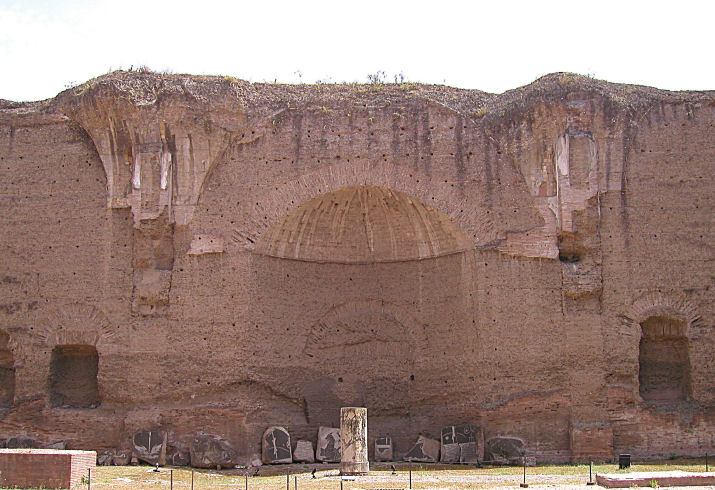

Baths of Caracalla
The areas below the bath complex have been partially excavated, but not available to the general public.
Some 5-6 kilometers of intersecting tunnels enabled the complicated water transportation, steaming, heating and cooling necessary to operate the services.
The excavations also provided a better knowledge of the ventilation, drainage and hydraulic systems that were used.
The underground even uncovered a sanctuary to the god Mithras; he was the central figure in a religious cult centered around Rome in the first four centuries AD. For unknown reasons, Mithras was always depicted as slaying a bull.
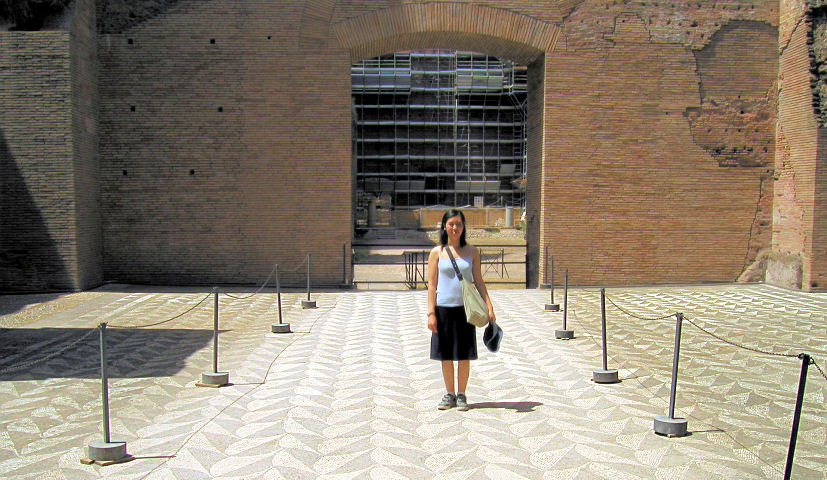

Baths of Caracalla
Most of the interior floors were beautifully decorated with polychrome mosaic.
The larger surfaces were covered with various repeating patterns somewhat associated with water or waves.
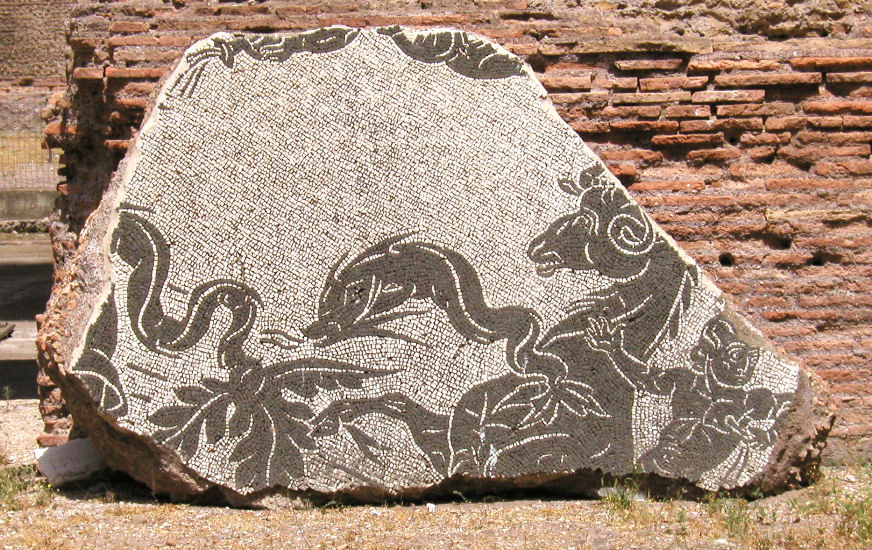

Baths of Caracalla
In many places, more elaborate mosaics depicted athletes, acrobats, sea creatures etc.
The Baths of Caracalla were unfortunately used as a quarry in the Middle Ages and most of the exquisite decorations have been removed and lost.
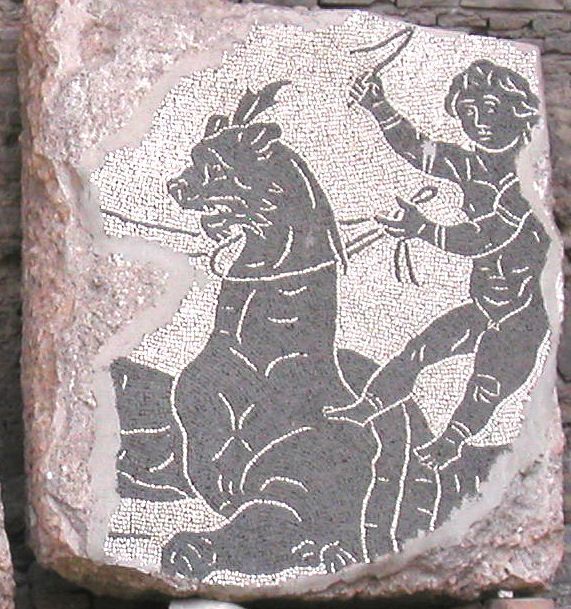

Baths of Caracalla
Another surviving beautiful floor mosaic.
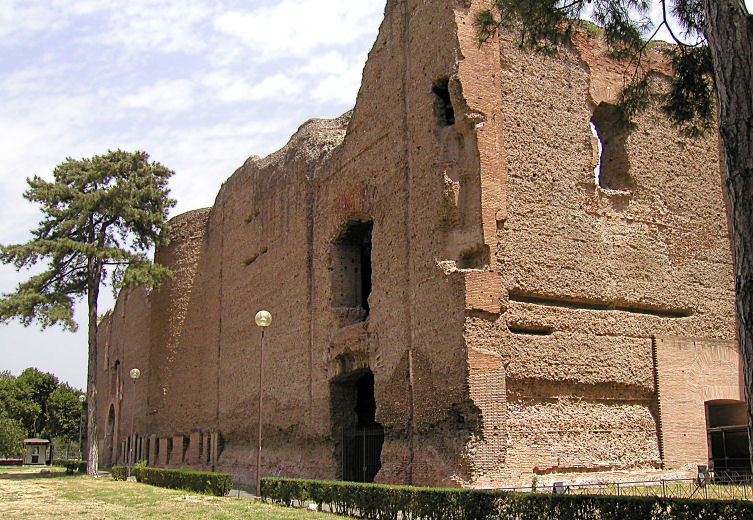

Baths of Caracalla
The bath complex remained in use all the way to the 6th century, when the hydraulic installations were destroyed by the Ostrogoths during the Gothic War.


Piazza de Popolo
And now to something entirely different...
We have moved to Piazza del Popolo, the square which greeted visitors to Rome for centuries being the area right inside the northern gate of the city walls.
The Egyptian obelisk, which adorns the center, was made by Sety I (son of Rameses I) around 1280 BC but moved to Rome in 10 BC by order of Roman emperor Augustus.
The obelisk was originally placed in Circus Maximus but moved in a later restoration.


Piazza de Popolo
This square also offers a rare opportunity to see the twin churches of Santa Maria in Montesanto (1679) and Santa Maria in Miracoli (1681).
At a quick glance they appear totally identical (mirrored), but a closer look will find many minor differences in the details.


Aurelian Wall
The first city wall of Rome was the "Servian Wall" built in 4th century BC., which can still be seen in various places.
The subsequent "Aurelian Wall", built between 271-275 AD., ran for 19 kilometers and enclosed all seven hills of Rome.
This wall was 3.5m thick and 8 meters tall, but in the 5th century the height was doubled to 16 meters.
18 gates controlled access to the city and a square watchtower every 30 meters offered defense.


Aurelian Wall
Rome had had no need for a walled protection for many centuries, but when tribes crossed the Alps and entered Italy in 270 AD, it became evident that better city defenses were urgent.
The size of the wall and the relatively small city garrison of 25,000 troops show that the wall was meant as a deterrent for a quick attack and get-away.
The barbarian troops from the north had no history of besieging cities and neither were they equipped to wage such warfare.
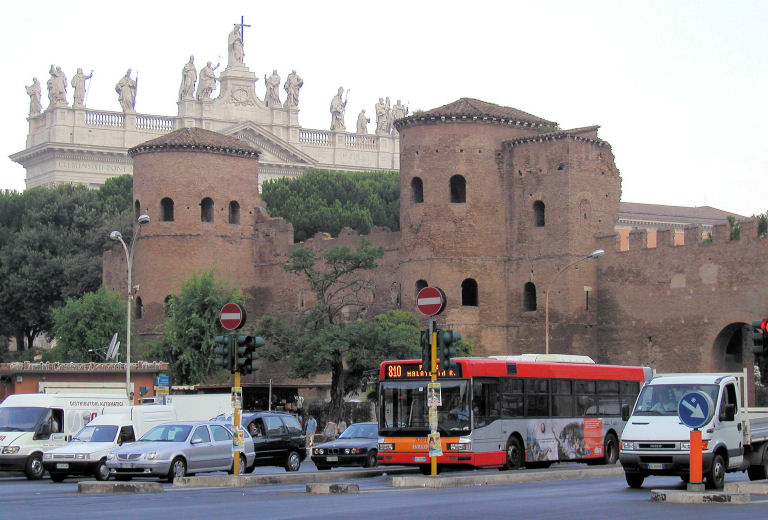

Aurelian Wall
The construction of the wall signaled the beginning of the end of Rome as a power house.
Rome had been waging war outside of Italy proper for centuries and feared domestically only internal enemies against whom no wall was effective.
But now the tables had turned. No longer able to defend its borders against incursions, the Roman empire now needed to build defensive walls around its own capital.
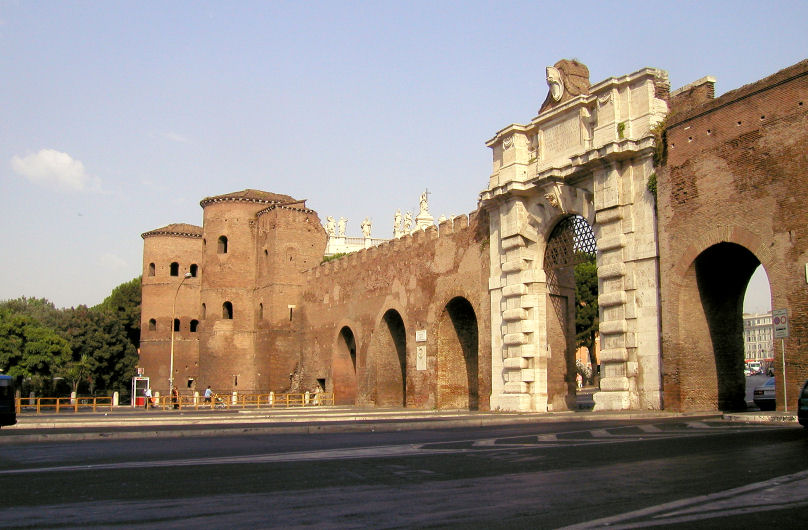

Aurelian Wall
Inaugurated in 1574, this single arch gate was constructed for pope Gregory XIII. It is named porta de Giovanni after the nearby Basilica of same name.
Traffic through the neighboring Porta Asinaria, an original Aurelian gate (left on photo), had far exceeded its capacity and the new gate solved the problem.
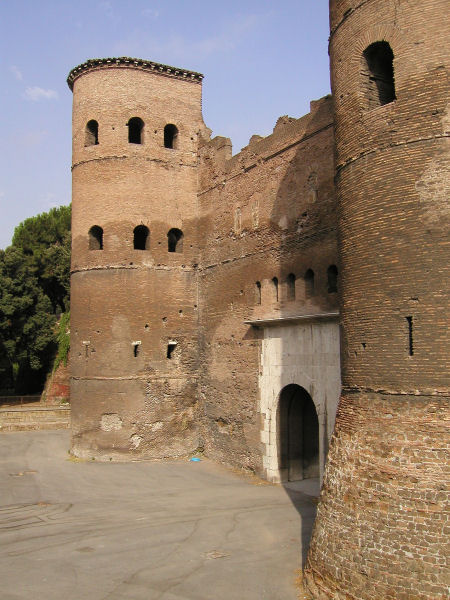

Aurelian Wall
Gate of Asinaria was constructed 270-273 AD and is one of many still extant original gates in the Aurelian Wall of Rome.
It has two protruding towers equipped with the requisite arrow slits and windows from where attacks could be repelled.
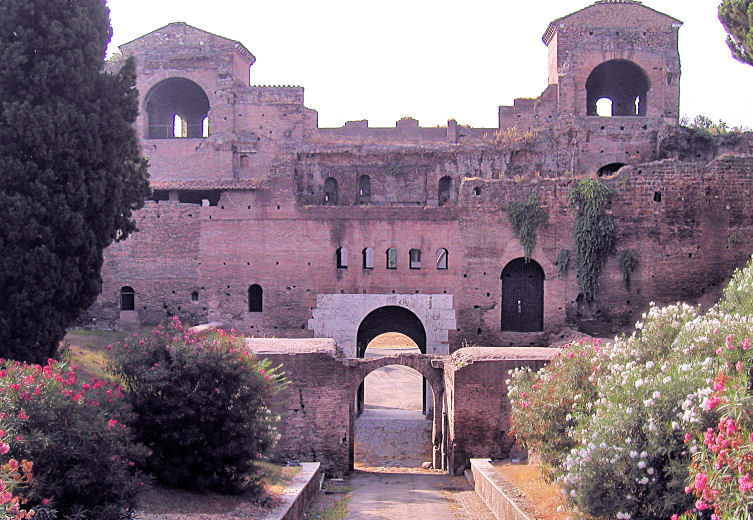

Aurelian Wall
Inner side of Gate of Asinaria.
The photo shows that the gate was well constructed for purposes of repelling attacks. Defenders had ample opportunities to quickly shift positions and concentrate on the most critical attackers.
The gate would however not survive a sustained attack from a siege since pile drivers and trebuchets would have made rubble of wall and towers in no time.


Farewell
Time for a delicious dinner to say goodbye to Italy this time.